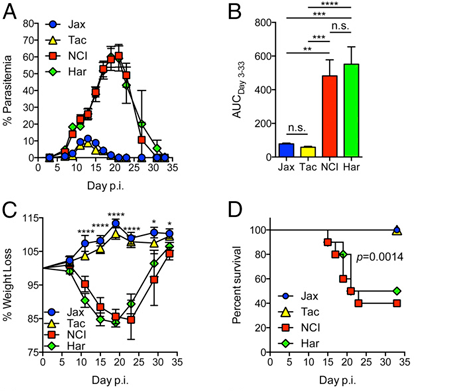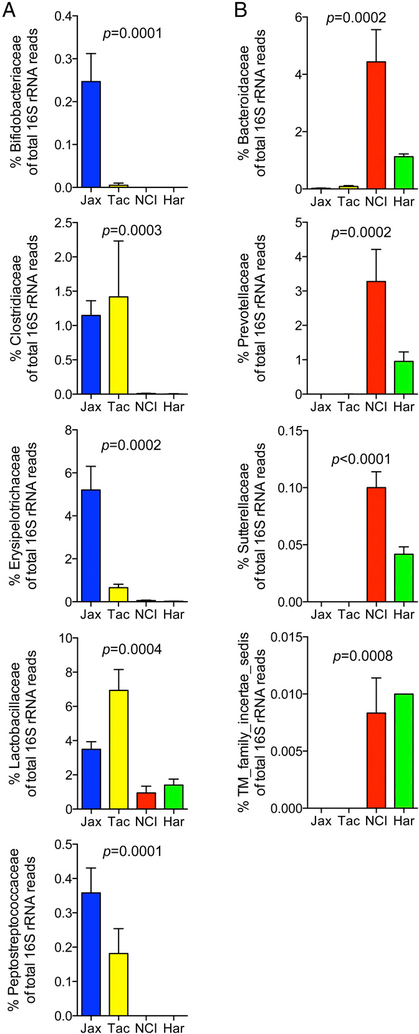The only variable appears to be the vendor...what could be happening?
In a previous Insight, I discussed considerations for mouse breeding. One of the suggestions in that post was that it may be optimal to outsource breeding GEMs and buy common inbred and outbred models from vendors. For this post, we'll consider why your choice of vendor is so important. In a recently published article, Composition of the gut microbiota modulates the severity of malaria, (PNAS January 2016), Nicolas Villarino and colleagues note that the source of C57BL/6 mice influence the severity of infection of Plasmodium yoelii, the bacteria that causes malaria.
According to the latest W.H.O. estimates, released in December 2015, there were 214 million cases of malaria in 2015 and 438,000 deaths. Some 15 countries - mainly in sub-Saharan Africa - account for 80% of malaria cases and 78% of deaths, globally. People who are infected with the Plasmodium bacteria experience differing severity of malaria, some showing almost no symptoms, yet others dying.
P. yoelli infection and survival

The mice were infected with Plasmodium yoelli and there were observed differences in parasitemia or the fraction of red blood cells infected with the bacteria. The mice from Tac and Jax were resistant, with a maximum of 10% parasitemia and had no sign of morbidity or mortality.
This was in contrast to substantial weight loss, mortality, and greater than 60% parasitemia observed in mice from NCI and Har. The NCI and Har mice also demonstrated more profound and longer lasting anemia compared with mice from Tac and Jax.
The data indicate the source of the mice influenced the severity of the malaria infection. But why?
Gut Microbiota Composition Steers Outcomes
Substantial differences in these bacteria were noted: Clostridiaceae, Erysipelotrichaceae, Lactobacillaceae and Peptostreptococcaceae being proportionately more abundant in the resistant Tac and Jax mice. Bacteroidaceae, Provotellaceae and Sutterellaceae were proportionately more abundant in the susceptible mice from NCI and Har.
Further studies were carried out in germ-free mice, an important tool for elucidating the role of the microbiome in disease. The paper reports that, following P. yoelii infection, GF mice that received either Jax or NCI cecal transplants had parasite burdens similar to control Jax and NCI mice. Both NCI control mice and GF mice that received NCI cecal transplants also had decreased survival compared with the Jax control mice and GF mice that received Jax cecal transplants. Collectively, the data provide a direct demonstration that the severity of the malaria infection was modulated by the gut microbiota.
The paper goes on to state, "This report demonstrates that the severity of malaria in mice is profoundly affected by the composition of the gut microbiota. The data lead to the hypothesis that differences in the gut microbiota may explain why some humans infected with Plasmodium progress to severe disease and the others do not." While the goal for this study was to further understanding of why some people are susceptible to malaria infections and others resistant, a coincident finding demonstrated differences in experimental outcomes related to the source of lab mice of the same strain, sex, and age.
Where Do Your Mice Come From?
So: are mice from one vendor better than another? Probably not the right question. Are mice from one vendor better for your study? That is a much better question.Villarino 's work proves experimental results can be confounded by sourcing mice from different vendors. To avoid this, you must validate the source of your study's mice and insist on a consistent vendor throughout your work. Where you get your mouse, matters!















.jpg)

.jpg)
.jpg)
.jpg)
.jpg)





.jpg)


.jpg)
.jpg)

.jpg)


.jpg)





.jpg)

.jpg)





